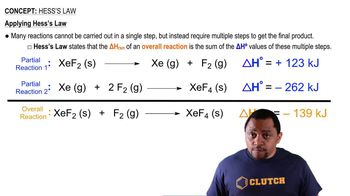The rate of a first-order reaction is followed by spectroscopy, monitoring the absorbance of a colored reactant at 520 nm. The reaction occurs in a 1.00-cm sample cell, and the only colored species in the reaction has an extinction coefficient of 5.60 × 103 M-1 cm-1 at 520 nm.
(a) Calculate the initial concentration of the colored reactant if the absorbance is 0.605 at the beginning of the reaction.




